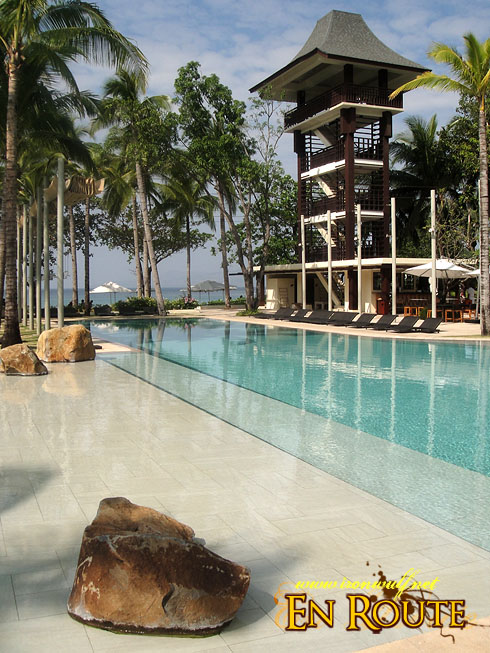More often than not, when development invades a place, it is the natural resources that are left to suffer when people started building structures. It’s a good thing that community developers now know the importance between the balance of nature and community. Anvaya Cove at Morong, Bataan is one such community concerned with environmental sustainability. They created the AEFI (Anvaya Environmental Foundation, Inc) and I got a chance to be part of their maiden project last December 5, 2009, which is the Clam Seeding for Reeforestation.
So why clam seeding? It is simply because it’s the fastest and easiest method to repopulate the reef. Giant Clams are self sustaining with its mantle full of brown symbiotic algae which provides them food. They are also hermaphrodites (both male and female) and at certain age of maturity from 8-10 years, they spawn millions of sperms and eggs into the reef. Their sperms and eggs are fish food which will eventually attract a number of small fish in the area. Of course larger fish would then be attracted to the small fishes until we go up to the food chain until the reef becomes populated again.
Enter the Giant Clams! For the clam seeding, AEIF had to bring in around 79 Giant Clams from UP Marine Institute in Bolinao, Pangasinan. These Giant Clams locally known as Taklobo is also scientifically known as the Tridacna Gigas, the biggest of the nine giant clam species in the world. Sadly they are also endangered with only 37,000 known to be left. The ones in UP were grown in the institute.
Getting Acclimatized. Seems like a term used for mountaineering but the Giant Clams need to get used to its new environment as well or they’ll stress out and die. They were shipped in large Styrofoam containers filled with iced sea water, then placed on shallow waters overnight. The next day, each clam, varying from young small ones aged 2 years old and large ones about 4 years old were measured and tagged.
It’s time to seed. By noon, divers started to seed each clam. I didn’t get to join the divers but I was able to snorkel and see the reef. It was almost a wasteland with only a few large fishes seen about 20 feet depth. It was a sad sight but at least the AEFI is doing something about it. Hopefully, in about 5 years of so after this seeding, we would see the reef flourish. Check out jayvee’s actual video footage of the seeding.
Video Documentary by Jayvee
In Harmony with Development. Of course being already in Anvaya, I couldn’t help but check out this private community resort. This large hectare of land has a community built in harmony with the natural flora and fauna of the cove. The design of the main resort is a combination of modern Japanese with a touch of Balinese.
The pool is beautiful with a few rocks on pool for that earth elemental accent. The food at Pawikan Bar is generally good too, especially for their Japanese Fair. Wifi is also freely available throughout the resort, so attending to emails while lounging at the beach is possible.
I’m all-in support for their measure to revive their reefs and glad to be part of this clam seeding project. Because no matter how beautiful you develop a place, all that is artificial. The natural way is to build communities in harmony with nature.
*All photos on this post were taken with a Sony Cybershot TX1. Get a chance to win your own TX1 and be published on February Issue of Status Magazine by checking the details here.

Ferdz Decena is an award-winning travel photographer, writer and blogger. His works has found print in publications such as Singapore Airlines’s Silver Kris, Philippine Airlines’ Mabuhay, Cebu Pacific’s Smile and Seair InFlight. He has also lent his expertise to various organizations like the Oceana Philippines, Lopez Group Foundation, Save the Children and World Vision, contributing quality images for their marketing materials.








